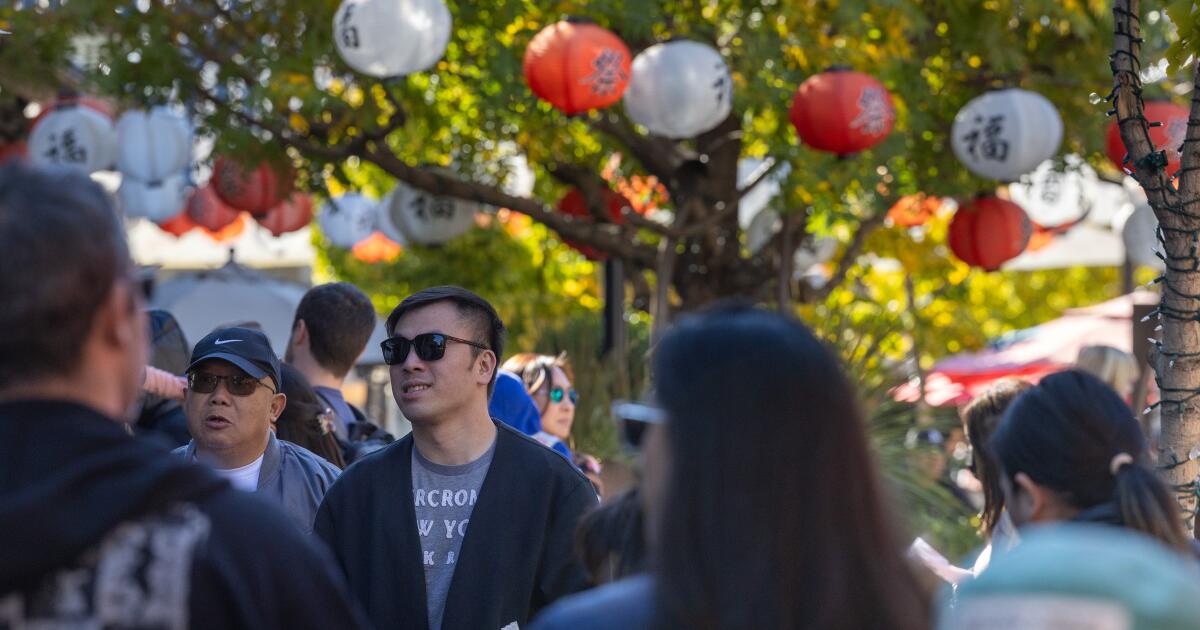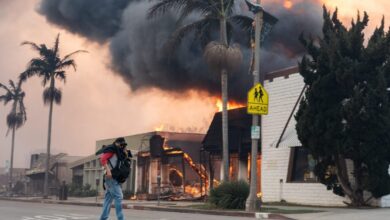How we dived into statistics to understand AAPI communities in Southern California

The arrival of Asian/Pacific Heritage Month in May led two Times data journalists to consider an unusual demographic pattern sometimes taken for granted by those who have lived in Southern California for a long period of time: the region’s massive community of people who trace their roots back to Asia and the Pacific Islands. Los Angeles neighborhoods, like those in the San Gabriel Valley, may be nationally known for their large Asian populations, but what’s less known is just how big they are — and that “the 626” is far from the only large AAPI community in the region.
Times data journalists turned to Census data to begin to quantify the size and ethnic diversity of the group that has become the fastest-growing demographic in the United States. They were driven in part by lived experience as two first-generation Asian Americans who grew up in large AAPI communities — Kambhampati from Central New Jersey, nearly 50% Asian and home to Little India, and Ylanan from Long Beach, home to one of the county’s largest Southeast Asian populations.
The analysis began with a search for summary historical statistics that would show top level information about Los Angeles County, only to find that type of data isn’t easily publicly available. Times journalists worked with the Los Angeles County Internal Services Department to access both the decennial Census and the American Community Survey for the most detailed data possible on Census tract level for Los Angeles.
The Census Bureau does not keep all historical census data in a digital format. After consulting with demographers from the Census Bureau, Los Angeles County demographers and the Population Reference Bureau, the analysis was limited to tracts using data from the 2000 and 2022 ACS. The Census has data suppression for smaller geographies to help de-identify the data. Data from 1980 came from the decennial Census as it had more detailed tables to understand demographic patterns. The Times then conducted its own spatial analysis, aggregating census data to conform with the neighborhoods defined by Los Angeles Times Mapping L.A. neighborhoods. For areas outside of Los Angeles, reporters pulled data from Census Reporter for counties on a Census Designated Place level.
The data isn’t without error — smaller geographies bring more uncertainty, or margin of error, in the estimated counts of a group. As a result, not every ethnic group was mapped.
In order to compare Los Angeles neighborhoods over time, reporters classified the data into Asia and Pacific Islander region groupings. The early Census forms did not include categories for each race group. In 1977, the Office of Management and Budget issued Directive 15, a policy that defined the basic racial and ethnic categories for federal statistics. Census forms in 1980 included nine groups for Asian and Pacific Islanders. In 1997, the OMB revised those race and ethnicity standards to allow respondents to specify more than one race on their census form, allowing a clearer picture of the country’s growing multiracial population.
Census form updates from the OMB continue today. The current census has over 40 categories, plus a write-in option for race groups that may have not been included on the form. The OMB recently announced major revisions to the race and ethnicity data standards in March, marking the first time that all federal agencies will be required to collect detailed race and ethnicity data. As a result, many communities will be seen for the first time by federal agencies that impact programs and funding.
Population estimates are likely undercounts, especially for AAPI groups. In a survey conducted by the Census Bureau, Asian Americans reported a lower likelihood of filling out the forms than other demographic groups, due in part to language barriers and a lack of communication about the purpose of the census form.
The continual disaggregation of data over time through the ongoing addition of ethnic groups makes the possibility of a comparison across multiple decades impossible without some level of uncertainty. No dataset is completely free from the possibility of error. The Times analysis accounted for this by rounding numbers, favoring percentages and dropping races that had a high margin of error. Census data still provide one of the best race and ethnicity population estimates available, which reveal, in aggregate, a rough estimate of how the Asian and Pacific Islander population has moved across Southern California.
Though many Asian and Pacific Islander ethnic groups have been added to government demographics counts since the 1980s, many communities have yet to be recorded. In 2020, the U.S. Census Bureau added Sikh, a religious community, to the form. Previously, responses of “Sikh” were classified as part of the Asian Indian category. More than 2,000 people identified as Sikh or in combination Sikh in the 2022 American Community Survey in Southern California. Researchers say this is an undercount.
“It’s a huge step to even be able to write in ‘Sikh’ on the Census,” said Tejpaul Bainiwal, a doctoral candidate at UC Riverside who studies Sikh Americans.
Scholars and advocates note that important demographic information is missed without further disaggregation of groups who identify as two or more races. While individuals can mark multiple race options, there are no released figures on the breakdown of specific multiethnic groups — and community advocates observe that significant demographic differences exist between different multiracial populations.
The disaggregation of multiracial groups allows researchers to detect changes in smaller demographic communities. More than 200,000 more people were identified as Native Hawaiian and Pacific Islander in combination with one or more races than as NHPI alone.
Having detailed data on different racial groups in the United States gives policymakers and the public alike an understanding of how communities have grown or shrunk over time. These figures are the basis of decision-making at multiple levels of government, from the allocation of federal resources and funding to the division of seats in Congress and state legislatures. But they also serve as the first step in understanding how individuals shape their neighborhoods — and how communities, in turn, shape the lives of the people who live in them.
A special thanks to Howin Song and Victor Chen from the Los Angeles County Internal Services Department, who spent time with The Times explaining the limitations of the data and pulling historical Census data.




